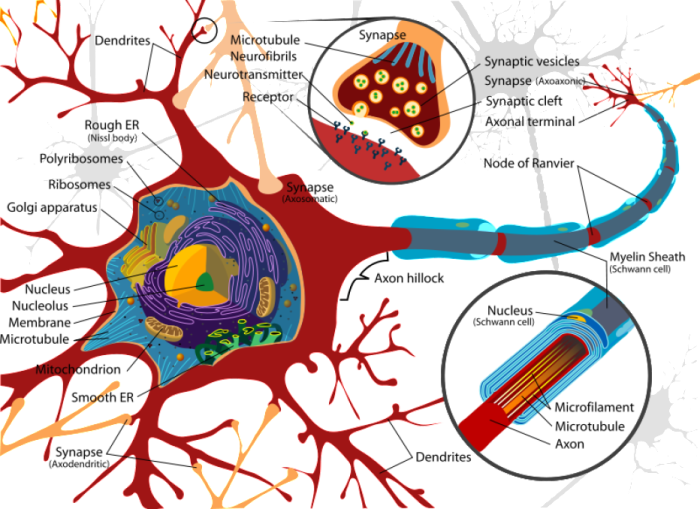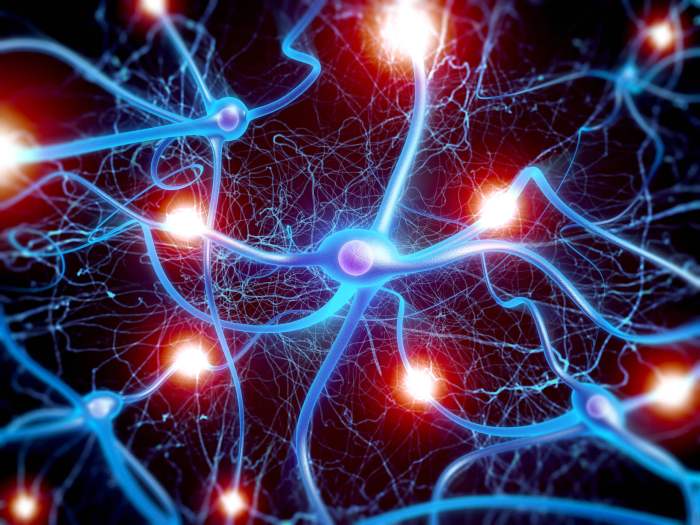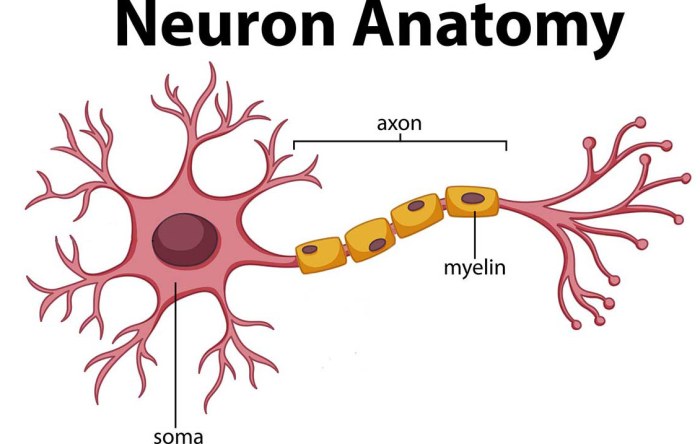How many neurons are in the human brain? This intriguing question has captivated scientists and researchers for decades. Delving into the depths of this topic, we will uncover the approximate number of neurons residing within the human brain, their distribution across various brain regions, and the methods employed to estimate their count.
Furthermore, we will explore the different types of neurons, their development, and their crucial role in brain function.
As we unravel the complexities of the human brain, understanding the number of neurons and their intricate connections is paramount. Join us on this journey of discovery as we delve into the fascinating world of neuroscience.
Methods for Estimating Neuronal Count

Determining the precise number of neurons in the human brain is a complex endeavor. Various methods have been employed to estimate this count, each with its own advantages and limitations.
Direct Counting
The most straightforward method involves physically counting neurons in brain tissue samples. This can be done using microscopy techniques, where thin sections of brain tissue are stained to visualize neurons. However, this method is only feasible for small brain regions and is not practical for estimating the total number of neurons in the entire brain.
Indirect Methods
Indirect methods rely on various assumptions and measurements to estimate neuronal count. These methods include:
- DNA Content Measurement:The amount of DNA in the brain can be measured and used to estimate the number of neurons, as each neuron contains a single copy of the genome.
- Isotropic Unbiased Stereology:This method involves randomly sampling brain tissue and counting neurons in each sample. The total neuronal count is then estimated by extrapolating the results to the entire brain volume.
- Magnetic Resonance Imaging (MRI):MRI techniques can be used to measure brain volume and the number of neurons per unit volume. This allows for non-invasive estimation of total neuronal count.
Advantages and Limitations
Direct counting provides accurate neuron counts but is limited to small brain regions. Indirect methods offer estimates for the entire brain but rely on assumptions and measurements that can introduce errors. The choice of method depends on the specific research question and the accuracy and precision required.
Types of Neurons
Neurons, the fundamental units of the nervous system, exhibit a remarkable diversity in their structural and functional characteristics. The human brain, with its intricate network of billions of neurons, encompasses a wide array of neuronal types, each specialized for specific roles in processing, transmitting, and integrating information.
Structural Differences
Neurons are broadly classified into three main types based on their structural features:
Unipolar neurons
These neurons have a single, unfused process extending from the cell body, which serves as both an axon and a dendrite. Unipolar neurons are primarily found in the sensory ganglia of the peripheral nervous system.
Bipolar neurons
Bipolar neurons possess two processes extending from the cell body: one axon and one dendrite. These neurons are found in the retina and olfactory bulb, where they play a role in sensory processing.
Multipolar neurons
The most common type of neuron, multipolar neurons have multiple dendrites and a single axon. Dendrites receive signals from other neurons, while the axon transmits signals away from the cell body. Multipolar neurons are found throughout the central nervous system, including the brain and spinal cord.
Functional Differences
In addition to structural variations, neurons also exhibit functional diversity, which is largely determined by the neurotransmitters they release. Neurotransmitters are chemical messengers that allow neurons to communicate with each other and with target cells.
Excitatory neurons
These neurons release excitatory neurotransmitters, such as glutamate, which increase the likelihood of firing in postsynaptic neurons. Excitatory neurons play a crucial role in transmitting information throughout the nervous system.
Inhibitory neurons
Inhibitory neurons release inhibitory neurotransmitters, such as GABA, which decrease the likelihood of firing in postsynaptic neurons. Inhibitory neurons help to balance neural activity and prevent overexcitation.
Modulatory neurons
Modulatory neurons release neurotransmitters that influence the activity of other neurons without directly exciting or inhibiting them. These neurons play a role in regulating mood, attention, and other cognitive functions.The diverse array of neuronal types in the human brain reflects the complexity and adaptability of the nervous system.
Each type of neuron is specialized for specific functions, working together to process, transmit, and integrate information, ultimately enabling the brain to perform its remarkable range of functions.
Development of Neurons

Neurons, the fundamental units of the nervous system, undergo a complex developmental process from their initial formation to their full maturation. This intricate journey, spanning multiple stages, ensures the proper functioning of the brain and nervous system.
Neurogenesis
Neurogenesis, the birth of new neurons, is a crucial step in neuronal development. It occurs primarily during embryonic development, with the majority of neurons being generated before birth. Neural stem cells, residing in specific regions of the brain, divide and differentiate into new neurons, which then migrate to their designated locations.
Migration
Once formed, neurons embark on a remarkable journey, migrating from their birthplace to their final destinations within the brain. Guided by chemical cues and cellular interactions, these immature neurons navigate through the complex brain environment to reach their designated positions.
Differentiation
As neurons reach their target locations, they undergo differentiation, a process where they acquire their specialized characteristics. This involves the development of dendrites, the structures that receive signals from other neurons, and axons, the structures that transmit signals to other neurons.
Additionally, neurons develop specific neurotransmitter receptors and ion channels, allowing them to communicate with other cells.
Synaptogenesis
Synaptogenesis, the formation of synapses, is a critical step in neuronal development. Synapses are the junctions where neurons communicate with each other, and their formation allows for the transmission of electrical and chemical signals throughout the nervous system.
Maturation
The final stage of neuronal development is maturation, where neurons reach their full functional capacity. This involves the refinement of synaptic connections, the development of myelin sheaths around axons, and the establishment of stable neuronal circuits. Maturation is influenced by a combination of genetic and environmental factors, and it continues throughout childhood and adolescence.
Factors Influencing Neuronal Development
Numerous factors influence neuronal development, including:
- Genetics:Genes play a crucial role in determining the number, type, and function of neurons.
- Environment:Environmental factors, such as nutrition, stress, and exposure to toxins, can impact neuronal development.
- Activity:Neuronal activity, including synaptic stimulation and neurotransmitter release, is essential for neuronal survival and maturation.
- Neurotrophic factors:These proteins, such as brain-derived neurotrophic factor (BDNF), support neuronal survival, growth, and differentiation.
Impact of Neurodegenerative Diseases

Neurodegenerative diseases are a group of conditions that progressively damage and destroy neurons, leading to a decline in brain function and behavior. These diseases affect millions of people worldwide and are a major cause of disability and death.
There are many different types of neurodegenerative diseases, including Alzheimer’s disease, Parkinson’s disease, Huntington’s disease, and amyotrophic lateral sclerosis (ALS). Each of these diseases affects different parts of the brain and causes a unique set of symptoms.
, How many neurons are in the human brain
Neurodegenerative diseases can have a devastating impact on brain function and behavior. In Alzheimer’s disease, for example, the progressive loss of neurons in the hippocampus leads to memory loss, disorientation, and eventually dementia. In Parkinson’s disease, the loss of neurons in the substantia nigra leads to tremors, rigidity, and difficulty with movement.
Neurodegenerative diseases can also lead to changes in personality and behavior. In Alzheimer’s disease, for example, patients may become withdrawn, irritable, and aggressive. In Parkinson’s disease, patients may become depressed and anxious.
Emerging Research on Neurons
Ongoing research on neurons is expanding our understanding of brain function and paving the way for advancements in treating brain disorders.
Recent studies have focused on:
Neuronal Plasticity and Learning
- Exploring how neurons adapt and form new connections in response to experiences, contributing to learning and memory.
- Investigating the role of neurogenesis, the formation of new neurons, in brain function and its potential for treating neurodegenerative diseases.
Brain-Computer Interfaces
- Developing technologies that allow communication between the brain and external devices, offering hope for restoring lost functions in individuals with disabilities.
li>Exploring the ethical and societal implications of brain-computer interfaces.
Neuroimaging Techniques
- Advancing neuroimaging techniques, such as fMRI and EEG, to visualize brain activity in real-time, enabling a deeper understanding of neural processes.
- Using neuroimaging to diagnose and monitor brain disorders, guiding personalized treatment plans.
Potential Implications for Treating Brain Disorders
These research advancements hold promise for developing novel therapies for brain disorders:
- Harnessing neuronal plasticity to promote recovery from brain injuries and neurodegenerative diseases.
- Utilizing brain-computer interfaces to restore communication and control for individuals with paralysis or other disabilities.
- Employing neuroimaging techniques to diagnose and monitor brain disorders, enabling early intervention and personalized treatment.
Final Summary: How Many Neurons Are In The Human Brain
In conclusion, the human brain is a remarkable organ composed of an intricate network of billions of neurons. These neurons are responsible for transmitting information, enabling cognitive functions, and shaping our thoughts, emotions, and behaviors. While we have gained significant insights into the number and distribution of neurons, ongoing research continues to unravel the complexities of the human brain and its vast potential.
As we delve deeper into the realm of neuroscience, we can anticipate groundbreaking discoveries that will further our understanding of brain function and pave the way for innovative treatments for neurological disorders.
FAQ Section
How many neurons are there in the human brain?
The human brain is estimated to contain approximately 86 billion neurons.
Where are neurons primarily located in the brain?
Neurons are found throughout the brain, with the cerebral cortex, cerebellum, and brainstem containing the highest concentrations.
What are the different types of neurons?
There are various types of neurons, including pyramidal cells, interneurons, and projection neurons, each with distinct structures and functions.
How do neurons contribute to brain function?
Neurons transmit electrical and chemical signals, allowing communication between different brain regions and facilitating cognitive processes such as memory, learning, and decision-making.
What is the impact of neurodegenerative diseases on neurons?
Neurodegenerative diseases, such as Alzheimer’s and Parkinson’s, can damage or destroy neurons, leading to progressive cognitive and motor impairments.